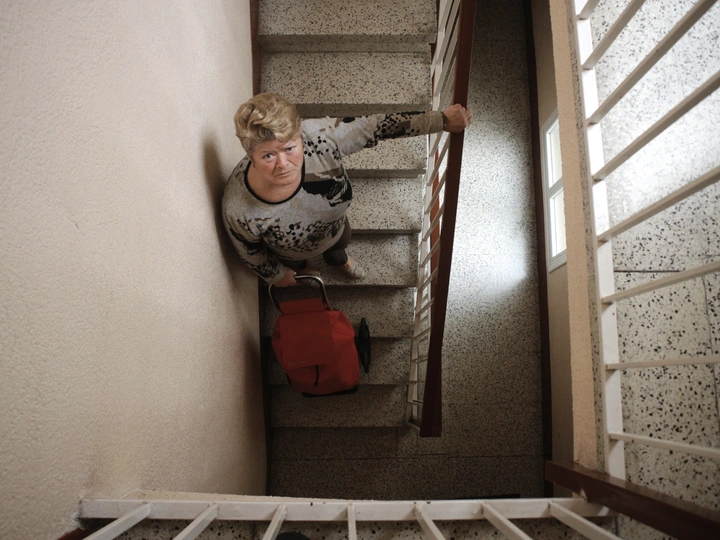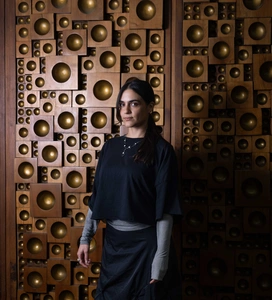Might she come down today?

Nami Gradolí Giner
Dea Khizanishvili
Adriana Núñez Alfaro
Nami Gradolí Giner is an architect and researcher based between Valencia and Barcelona. Her work explores how inherited housing typologies—particularly postwar and mass housing—respond to contemporary vulnerabilities such as aging, inaccessibility, and climate risk. She approaches architecture as a spatial and political practice, combining visual ethnography, technical analysis, and participatory formats to document lived experience and open design debates grounded in everyday life. She frequently works with film as a research tool and as a means to activate collective conversations around housing.
She co-directed the award-winning project 67 Steps (2022–2023), which addressed accessibility and co-ownership in walk-up buildings in Barcelona, and was nominated for the EUmies Young Talent Architecture Award. Building on this work, she is currently developing a documentary film supported by the Institut de Cultura de Barcelona and La Bonne, co-directed with Adriana Núñez Alfaro.
Her recent project mi/SHENEBA (2025) documents informal housing extensions in Tbilisi, Georgia, developed during a Culture Moves Europe residency and presented through a collective screening and public talk at Mutant Radio. She has also contributed to workshops and exhibitions addressing housing and accessibility in the aftermath of the 2024 Dana floods, in collaboration with UPC and UPV.
Nami currently collaborates as an architect at Gradolí & Sanz Arquitectes and is about to begin her PhD at the Universitat Politècnica de Catalunya, focusing on collective strategies for adapting housing to accessibility challenges and other vulnerabilities in Southern Europe. Through film and fieldwork, she seeks to bridge architectural research, storytelling and public engagement—rethinking renovation from the inside out.
Isabel has lived in the same walk-up building in Barcelona since the 60s. She’s 71 now. Her husband can no longer go down the stairs. So Isabel does it all: she shops, climbs back up, and keeps trying to install an elevator. For years, she’s been navigating a maze of co-ownership, rigid regulation and inaccessible subsidies. Sometimes she thinks about leaving. But where?
Thousands of kilometers away, in Tbilisi, Dodo hauls her groceries up with a rope from the balcony. She’s 87 and lives on the fifth floor of a Khrushchovka. In the 90s, during the unregulated post-Soviet period, she led the extension of her apartment. They could have added a lift, but couldn’t afford it. In her building, transformation came from within, but without structural support.
Hyperregulation or radical informality—same result. Both inhabit similar five-storey buildings, where older bodies age in homes that no longer fit them. Accessibility is not a right. It becomes a class privilege.
Other vulnerabilities accumulate. In the Dana floods of 2024, many ground-floor apartments were among the most devastated. What happens when accessibility becomes risk?
Might she come down today? builds on these experiences, and on previous work such as mi/SHENEBA, a film-in-progress in Tbilisi, and 67 steps, a Barcelona-based documentary project. Through film, fieldwork and shared conversations, it explores how inherited domestic spaces across Europe respond to aging, inaccessibility and climate risk—while testing methodologies that connect spatial analysis with lived experience. Following stories of informal adaptation, questioning typologies and the ways we inhabit them.
The project is nourished by a forthcoming PhD at UPC, focused on collective strategies for retrofitting inherited housing. Might she come down today? is one expression of that process—rooted in lived experience, and grounded in the hope of imagining other ways of living, aging, and renovating homes—together.
